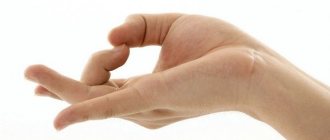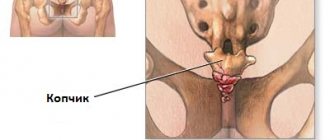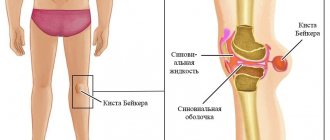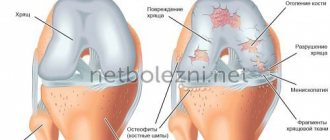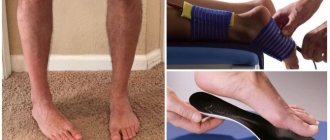Foot pain is a common reason for seeking medical help. It can be caused by damage to peripheral nerves, distal vessels, periarticular tissues, the joints themselves, bones, skin and muscles. In medical practice, a separate category is “pain syndrome” of the foot, which can cause physiological and nervous changes. Differential diagnosis for this symptom requires an integrated approach with in-depth knowledge of anatomy, since foot pain can be caused by a large number of factors. It is the correct diagnosis that allows you to subsequently select the correct treatment algorithm aimed at the causative factor.
Possible causes of foot pain when walking
Many factors can cause foot pain. The most dangerous of them are injuries, as well as chronic diseases that develop slowly, but without treatment lead to loss of sensitivity and the inability to move normally. The reasons why a person has foot pain and it hurts to step on his foot may be diseases from the following groups:
- orthopedic;
- neurological;
- vascular.
Unfortunately, with many foot pathologies, deviations of all three types develop over time, which complicates diagnosis and treatment. Thus, with joint diseases, complications associated with the condition of the nerves and blood vessels may appear: compression of the nerve roots, narrowing of blood vessels, impaired blood circulation and other disorders. To identify the root cause of pain in such cases, a comprehensive diagnosis is required.
Pain in the joints of the foot when walking can be aggravated by the following factors:
- smoking (causes poor circulation);
- hypothermia;
- frequent injuries;
- past infections;
- wearing uncomfortable shoes;
- excessive sports activities;
- obesity;
- dehydration.
Most often, pain is caused by prolonged wearing of incorrectly selected shoes. At the same time, both sneakers and ballet shoes with flat soles and shoes with excessively high heels have an equally bad effect on the condition of the foot. Shoes with flat soles deform the foot over time, often leading to flat feet. Addiction to high heels is fraught with deformation of the toes and arch of the foot. However, the chances of correcting the deformity if you consult a doctor in a timely manner are high: acquired disorders in the early stages can be successfully treated conservatively with the help of physical therapy and massage.
Please note: if the reason why your feet hurt and it hurts to walk is an injury, contacting a traumatologist is mandatory, no matter how minor the injury may seem. Neglected injuries lead to various chronic diseases and gradual destruction of the osseous-ligamentous apparatus.
Injuries
Often the foot of the right leg hurts after injury. Bruises caused by a blunt object or a heavy object falling on the leg are considered relatively harmless injuries.
When a bruise occurs, pain occurs in the damaged area, which intensifies when walking. The foot may swell and a hematoma (bruise) may appear. If you receive a severe bruise, it is recommended to take an x-ray to rule out fractures and cracks in the bones. First aid for a bruise is based on the application of cold, providing a gentle regimen for several days. Ointments such as Heparin ointment, Troxevasin, Venolife help with hematomas.
Fractures are considered a serious injury. The pain is so severe during a fracture that the person cannot lean on the foot, the leg swells greatly, and hyperemia predominates. With an open fracture, bone fragments may be visible in the wound. Fractures are treated in a hospital, a cast is applied, and pain medication is prescribed.
Often, with sudden movements, jumping, or falling from a height, a person can get sprained or torn ligaments, dislocations, which are also accompanied by severe pain and limited movement. Treatment involves immobilization using plaster casting, applying an elastic bandage, or wearing an orthosis.
Often, during the healing of injuries, a person has a question about why the damaged area itches. This phenomenon is considered normal as the healing process occurs.
The most common foot diseases
The most common reason why your foot hurts when you step on it after a long period of rest is fasciitis, that is, inflammation of the connective tissue, which can be accompanied by severe swelling. Often this disease causes a complication such as a heel spur.
If the pain appears suddenly (usually at night) and is accompanied by cramps, increasing swelling, and fever, then the cause of the pain is most likely gout. With this disease, excess amounts of uric acid accumulate in the body - first in the joints and tophi under the skin, and then in the internal organs. Infectious arthritis has a similar clinical picture. Typically, inflammation develops when an infection enters a joint through a wound or after a previous
illness, such as a sore throat or food poisoning.
If pain appears regularly, its cause may be arthrosis or non-infectious arthritis. These pathologies of cartilage tissue are distinguished by the following characteristic features:
- the appearance of clicks and crunches when moving fingers and walking;
- constant discomfort, turning into pain with fatigue or prolonged exercise;
- decreased mobility;
- frequent swelling.
Connective tissue diseases can be controlled, and in the early stages even completely eliminated with the help of complex therapy. However, in the absence of adequate care, arthrosis and arthritis lead to severe deformation of the foot, constant pain and decreased mobility.
How to treat fasciitis correctly
The most effective and lasting treatment is always aimed at eliminating the cause of the disease. The main factors in the development of fasciitis are overload of the foot and decreased elasticity of the fascia. Therefore, actions aimed at unloading the arches and improving the quality of the ligaments lead to the most noticeable results. Most importantly, effective treatments for fasciitis are safe.
Plantar fasciitis is a disease that requires the active participation of the patient himself. Of course, it seems easier to give the injection and forget about the pain. But until the patient himself improves the functioning of his body, the symptoms will return and increase. Below are the most effective methods for finally getting rid of pain between the toe and heel:
- High-quality orthopedic insoles. It's better if they are individual. The elastic protrusions of the instep supports massage the aponeurosis, improve its blood circulation and elasticity. The right insoles support the arches well and relieve excess stress on the fascia.
- Physical exercise. A competent rehabilitator will describe a training regimen and “stretching” that will work most effectively for you. With regular exercise, it is possible to increase the elasticity of the fascia and muscles, which will significantly reduce discomfort.
- Night tires. Durable plates that are worn on the leg during sleep and improve the metabolism of the aponeurosis. During the night period, body tissues are most pliable, which gives the splint the opportunity to effectively increase their elasticity.
Medtechnika Orthosalon stores are professional establishments where you can undergo foot diagnostics and select the most suitable orthopedic products. A large selection of therapeutic and prophylactic insoles, massagers and splints allows you to individually approach any form of fasciitis. Experienced consultants will help you decide on the optimal models to improve the performance of your feet.
Unobvious causes of foot pain when stepping on your foot
Prolonged dehydration or lack of minerals can cause spasms and cramps in the feet and legs. The same symptoms sometimes appear with excessive coffee consumption and lack of sleep. Pain in the head, heart or back, as well as in the legs can cause nervous stress.
Diseases of the spine, hip and knee joints can also lead to painful feet. The immediate causes of pain in such cases are circulatory disorders, compression of the nerve roots and improper distribution of the load on the torso and limbs. Feedback is also possible: advanced pathologies of the feet sometimes lead to the development of diseases of the spine or large joints of the legs. Unpleasant sensations in the feet can also be caused by vascular diseases, including varicose veins. The following signs indicate that pain is caused by circulatory problems:
- constant coldness of the feet;
- cyanosis of the skin;
- frequent spasms;
- burning sensation in the veins;
- swollen, knotty or hidden veins;
- the presence of small pinpoint hemorrhages.
Useful video from a doctor
Professor, neurologist, chiropractor and medical kinesiologist, MD. Vasilievna Lyudmila Fedorovna about pain in the foot:
Author of the article:
Kaplan Alexander Sergeevich |
Orthopedist Education: diploma in General Medicine received in 2009 at the Medical Academy named after. I. M. Sechenov. In 2012, she completed postgraduate studies in the specialty “Traumatology and Orthopedics” at the City Clinical Hospital named after. Botkin at the Department of Traumatology, Orthopedics and Disaster Surgery. Our authors
Diagnosis of foot pain
If you are sure that the pain is not related to injury, you should seek help from a neurologist or orthopedist. The doctor will conduct an examination, evaluate reflexes and mobility of the foot, study your medical history and refer you to diagnostic procedures:
- X-ray;
- MRI;
- CT;
- Ultrasound of joints and blood vessels;
- lab tests.
In some cases, examination of the knee and hip joints and spine may be required. Only after the doctor finds out exactly why the foot hurts when walking, will he be able to determine how to properly treat this ailment.
Features of treatment
If your feet hurt when you walk, you probably won't need surgery. Surgery is necessary only when purulent processes are detected, as well as in cases of severe damage or deformation of joints and tendons. In other cases, conservative methods are used:
- taking medications;
- physiotherapy;
- exercise therapy;
- massage;
- diet;
- wearing orthopedic devices.
Treatment is usually long-term in nature, as its goal is to correct all changes in the anatomy of the foot caused by injury or disease. Wearing orthopedic shoes or special insoles and liners, massage and physical therapy can restore mobility and endurance of the foot. At first, if you have difficulty walking, you can use a cane. A combination of medications and physiotherapy helps:
- eliminate pain syndrome;
- eliminate inflammation and swelling;
- restore the osseous-ligamentous apparatus;
- normalize blood circulation.
Content
- Causes and risk factors
- Diagnostic methods
- Treatment methods
- Expert opinion
- Treatment programs
- Who carries out the treatment?
- Why do they contact us?
- Reviews from our patients
- Sign up for treatment
The medical clinic is equipped with modern high-tech equipment that will help the doctor identify even the most complex pathologies of the musculoskeletal system. Qualified specialists will select medications for you and quickly resuscitate your joints!



